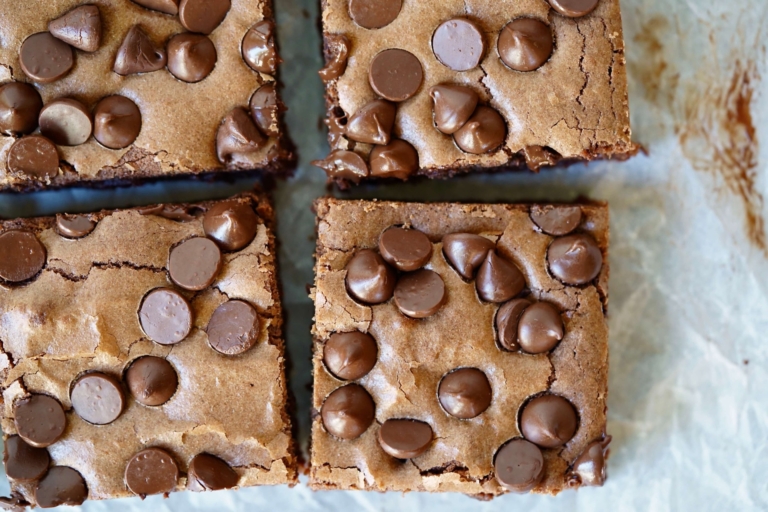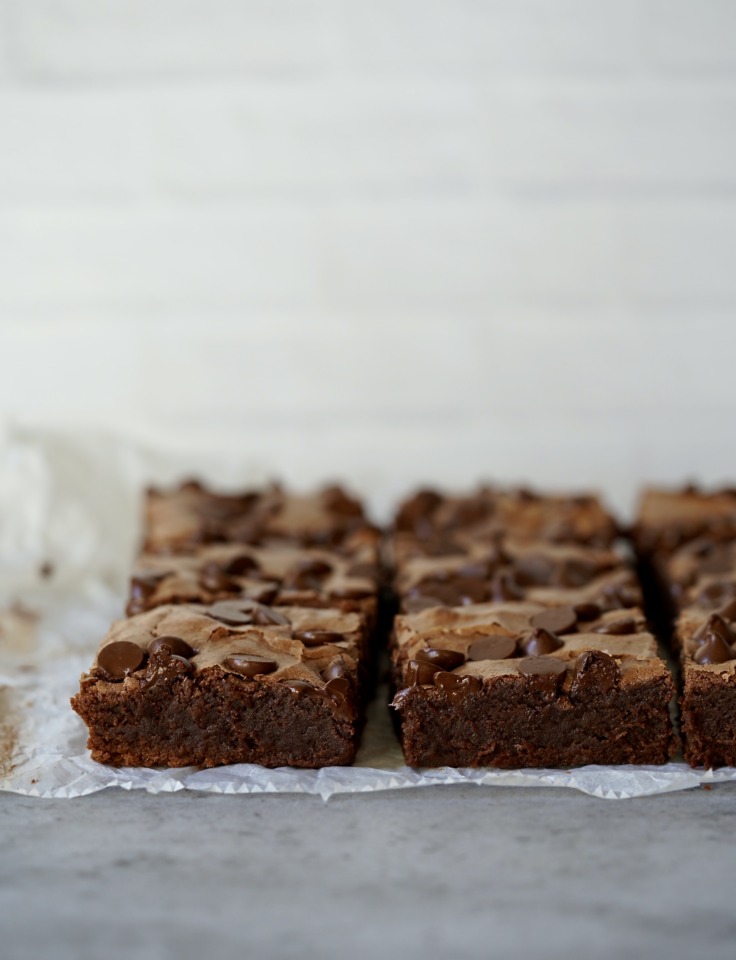Mochi Brownies

If you’re a brownie fan, keep reading, these outrageous chocolate mochi brownies may just be the dessert of your dreams. Mochi brownies are a delightful fusion of traditional brownies and Japanese mochi. Made with mochiko, (glutinous rice flour), which gives these brownies a slightly chewy feel, in addition to an unexpected bounce and lightness, that compliments the rich chocolate flavor.
The Origin of Mochi
The origins of mochi, (a rice cake made from glutinous rice,) can be traced back to Japan, and the Jomon period, which lasted from around 14,000 BC to around 300 BC and has been considered a traditional food for centuries. To make mochi, the rice is pounded into a paste and then molded into various shapes and sizes that can be eaten on its own or used as an ingredient. Mochi’s chewy texture and mild flavor make it a versatile ingredient that can be paired with a variety of other flavors and it is a go-to within many Japanese dishes.
Traditional Sweet Mochi:
- Daifuku: A small round mochi filled with sweetened red bean paste.
- Hanami Dango: Mochi balls skewered with sweet red, white, and green colors, traditionally eaten during cherry blossom viewing.
- Ichigo Daifuku: A variation of daifuku filled with whole strawberries.
- Sakura Mochi: Mochi wrapped in a pickled cherry blossom leaf, usually filled with sweet red bean paste.
Traditional Savory Mochi:
- Zoni: A clear soup containing mochi and various vegetables, commonly eaten during New Year celebrations.
- Isobemaki: Mochi wrapped in seaweed and grilled.
- Okinawan Champuru: A stir-fry dish from Okinawa that sometimes includes sliced mochi among its ingredients.
- Kinako Mochi: Mochi coated with sweet roasted soybean flour, often eaten as a snack.
Mochi is also commonly used in traditional ceremonies and as festival items associated with the Japanese New Year where it is considered an offering or a symbol of good luck and prosperity. During such occasions, mochi is often eaten in a good luck soup called ozoni or grilled and served with soy sauce and sugar.
Rice Flour
In addition to mochi, rice flour is used in a wide range of dishes and recipes apart from Asian desserts and pastries. Rice flour is also used for batter and breading, such as in tempura, to help make that crispy coating for frying. It is also used as a thickening agent in soups, sauces, and gravies. Rice flour is also a popular choice for gluten-free baking and is commonly used to make gluten-free noodles, such as Vietnamese pho noodles or Thai rice noodles as well as for making rice paper wrappers for spring rolls.
In recent years, mochi has become increasingly popular in baked goods around the world flooding your Instagram feed with just about everything imaginable. Chocolate mochi brownies combine the best of both worlds – the familiar taste of brownies with the chewiness of mochi. Mochi brownies are enjoyed by people who love both traditional American desserts and Japanese sweets, offering a unique and tasty dessert experience. So if you’re a brownie lover, this recipe should be your next bake, trendiness aside, they are truly irritable.
Mochi Brownies
Ingredients:
- 1/2 cup unsalted butter, cut into pieces
- 1 3/4 cups good quality semisweet chocolate chips, divided
- 1 cup sugar
- 3 eggs
- Pinch of salt
- 1 teaspoon vanilla extract
- 1 cup Mochiko (sweet rice flour)
Directions:
- Preheat the oven to 350 degrees F.
- Line a 8x8 square cake pan with parchment paper, lightly grease and set aside.
- Place the butter and 1 1/4 cups of the chocolate chips in a large microwave-proof bowl and microwave on high for 1 minute. Stir and microwave for another 15 seconds until completely melted. Whisk until well blended with the butter. Add the sugar to the chocolate-butter mixture and mix until until combined. Add the eggs, one at a time and whisk until combined. Add the salt and the vanilla and blend. Next stir in the rice flour and mix to blend.
- Pour the batter into the prepared baking pan. Use a rubber spatula to spread evenly and lightly tap the pan against the counter to get rid of any air bubbles. Sprinkle the remaining 1/2 cup chocolate chips on top.
- Place the brownies in the oven and bake until set and cake tester comes out clean, about 30 minutes. Allow the mochi brownies to cool completely in the pan completely,





